When you hear the phrase “bamboo tribe”, you might picture some long-haired, freaky people sitting around a bonfire playing African drums and didgeridoos. Or you might imagine an even more tasteless case of cultural appropriation, full of bows and arrows and tipis held up by bamboo poles. But the bamboo tribes are actually just a simple matter of botanical taxonomy to help keep these 1,400+ species organized.
Within the grass family (Poaceae), the subfamily Bambusoideae includes more than 1,400 varieties of bamboo. This subfamily is further divided into three tribes of bamboo: Bambuseae (woody, tropical, with clumping rhizomes), Arundinarieae (woody, temperate, usually with running rhizomes) and Olyreae (herbaceous or non-woody). Because these are man-made categories, the lines of distinction are not always perfectly clear. Still, separating the manifold species of bamboo into tribes is helpful for botanical classification.
NOTE: This article first appeared in June 2021, most recently updated in April 2024.
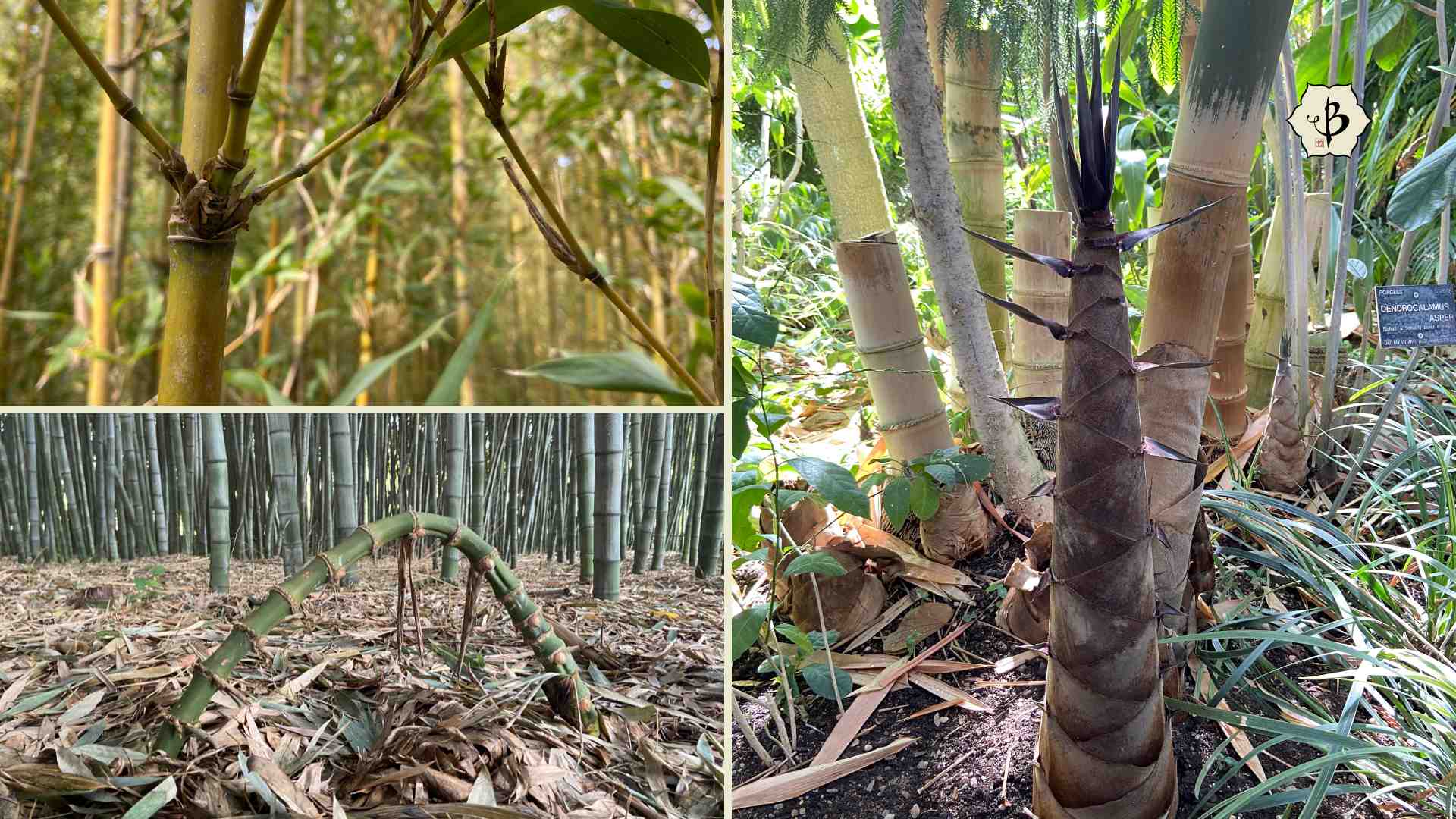
Taxonomy of living things
In middle school science classes, we learned how biologists organize the tree of life. Perhaps you had a mnemonic device to help you remember, like “King Philip came over for good spaghetti”. Or maybe you just memorized the seven levels of classification: kingdom, phylum, class, order, family, genus, and species.
Using these categories, we can see that killer whales are more closely related to giraffes than to sharks. (They are even-toed ungulates of the mammalian order, not fish.) We can also show that the pill bug is more closely related to the shrimp than the beetle. (They are crustaceans, not insects.)
We understand why whales, which are born alive and breathe oxygen, are mammals. But it’s not so obvious why the roly-poly is not an insect. Even the scientists don’t always agree, as we’ll see later. And they usually end up using more than just those seven categories. (You’ll notice that tribes and subfamilies are not on the original list of seven.)
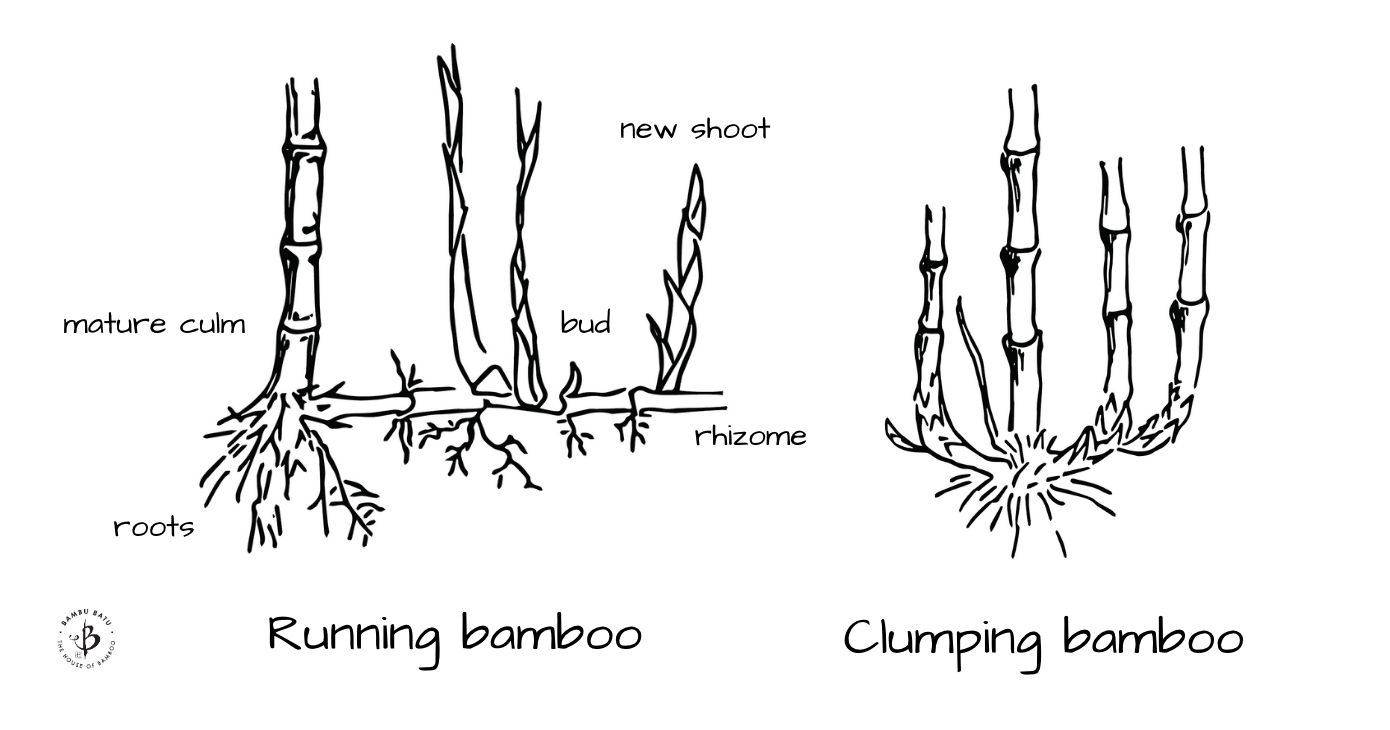
The classification of bamboo: Families and Tribes
Oftentimes, what appears to be closely related is not as close as we thought. Certain physiological traits, which may not be obvious on the outside, reveal deep and prehistoric kinships. Such is the case with bamboo, which in many ways looks more like a tree than a grass, at least to the casual observer. But to the botanist, the roots, stems and flowers of bamboo are clearly grasslike.
Still, bamboo stands apart from other grasses. So, within the grass family, it has a subfamily of its own: Bambusoideae. And before we sort bamboo into their 120 or so genera, it’s very useful to divide them into tribes.
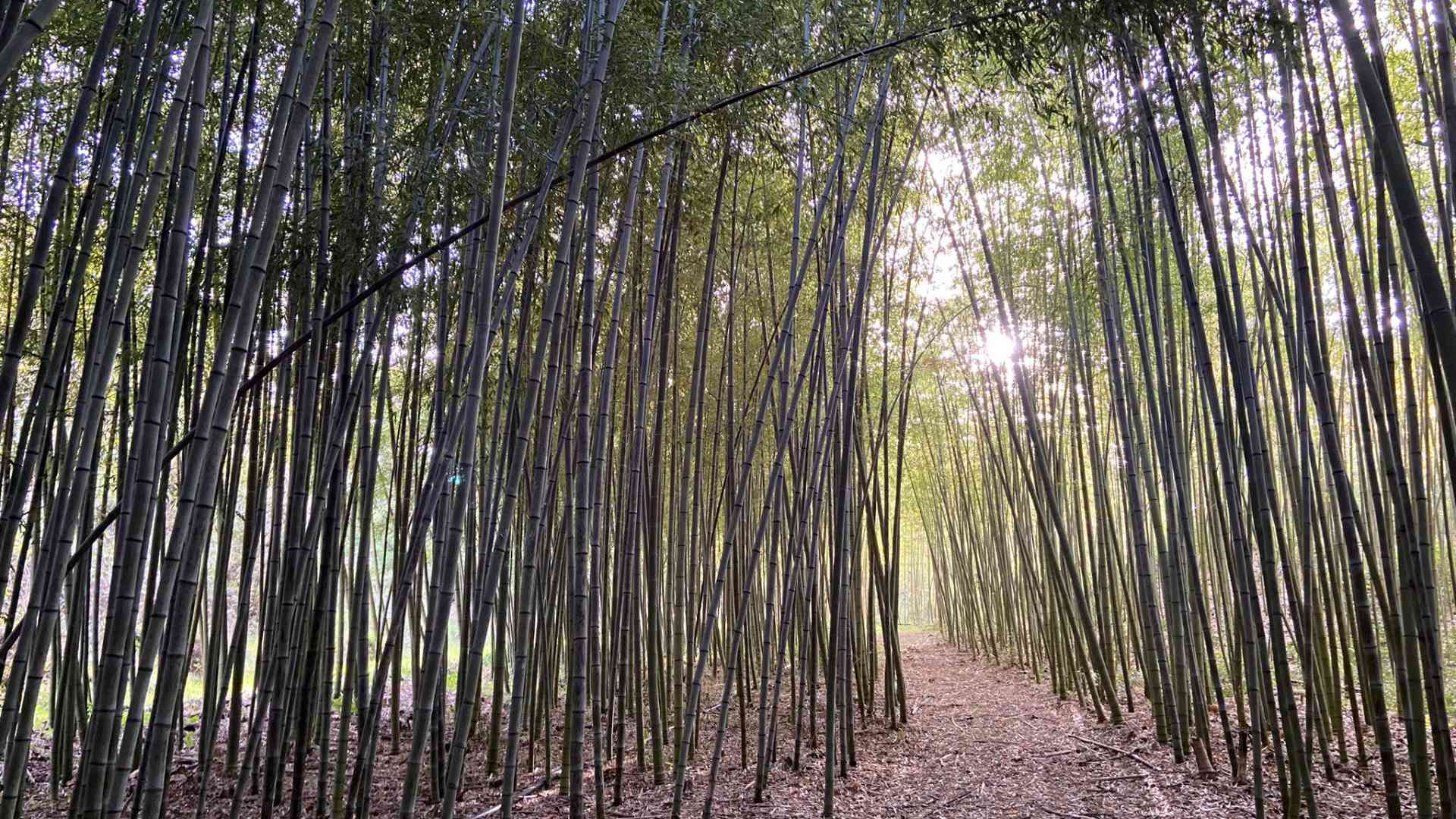
Running and clumping bamboo
Most bamboo growers know that there are two different types of bamboo: runners and clumpers. So you would think that somewhere in the botanical classification of bamboo, they would draw a line between runners and clumpers. And that’s part of what the bamboo tribes are.
For the most part, clumpers belong to the tropical bamboo tribe, Bambuseae. These varieties have pachymorph, sympodial rhizomes, which cling close together. Notably, they grow underground in a U-shape, bending upwards, close to the other culms, rather than extending outwards, away from the main plant. Generally speaking, this tribe of bamboo prefers warmer climates, i.e. tropical or subtropical.
Next, we have running bamboos, which belong to the temperate bamboo tribe, Arundinarieae. These varieties have the aggressive and potentially invasive rhizome roots, which botanists call leptomorph or monopodial. They stretch out, running parallel to the ground, often fast and furious, creating a complex underground network. By the time you see a lot of fresh shoots coming up, the unseen root system can be quite vast and well-established.
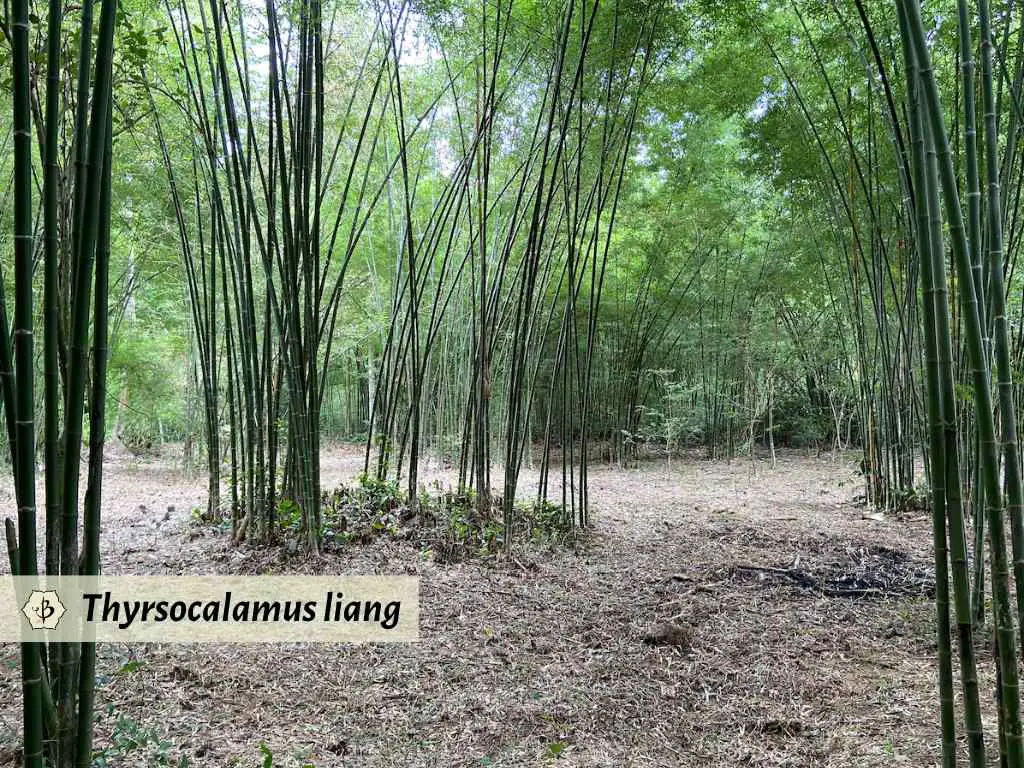
Exceptions and open clumpers
In our minds, the line between runners and clumpers is clear and well-defined. But nature is not so cut and dry. So we have to make some exceptions. And here is where it can get confusing.
There are several outlying genera of clumping bamboo that are less tropical and more temperate, and so they belong to the Arundinarieae tribe. The most widespread examples of cold-hardy clumpers include Borinda, Fargesia, Himalayacalamus and Yushania. But in many cases, botanists cannot agree on which species belong to which genera, or whether they are even in the right tribe.
Some of these clumpers also have a tendency to spread out. We call them open clumpers. Although they technically have pachymorph rhizomes, they can stretch pretty far before bending upwards. Borinda and Himalayacalamus often do this.
In the Bambuseae tribe, the genus Chusquea and Guadua from South America also have some open clumpers. And they are temperate in terms of climate, often hardy down to 0º F.
In the genus Dendrocalamus, we have the enormous timber bamboos of southern Asia and Indonesia. They are definitely tropical, and they have clumping roots, too. But they are open clumpers. Sometimes their massive rhizomes will creep several feet before curving up and shooting into new culms.
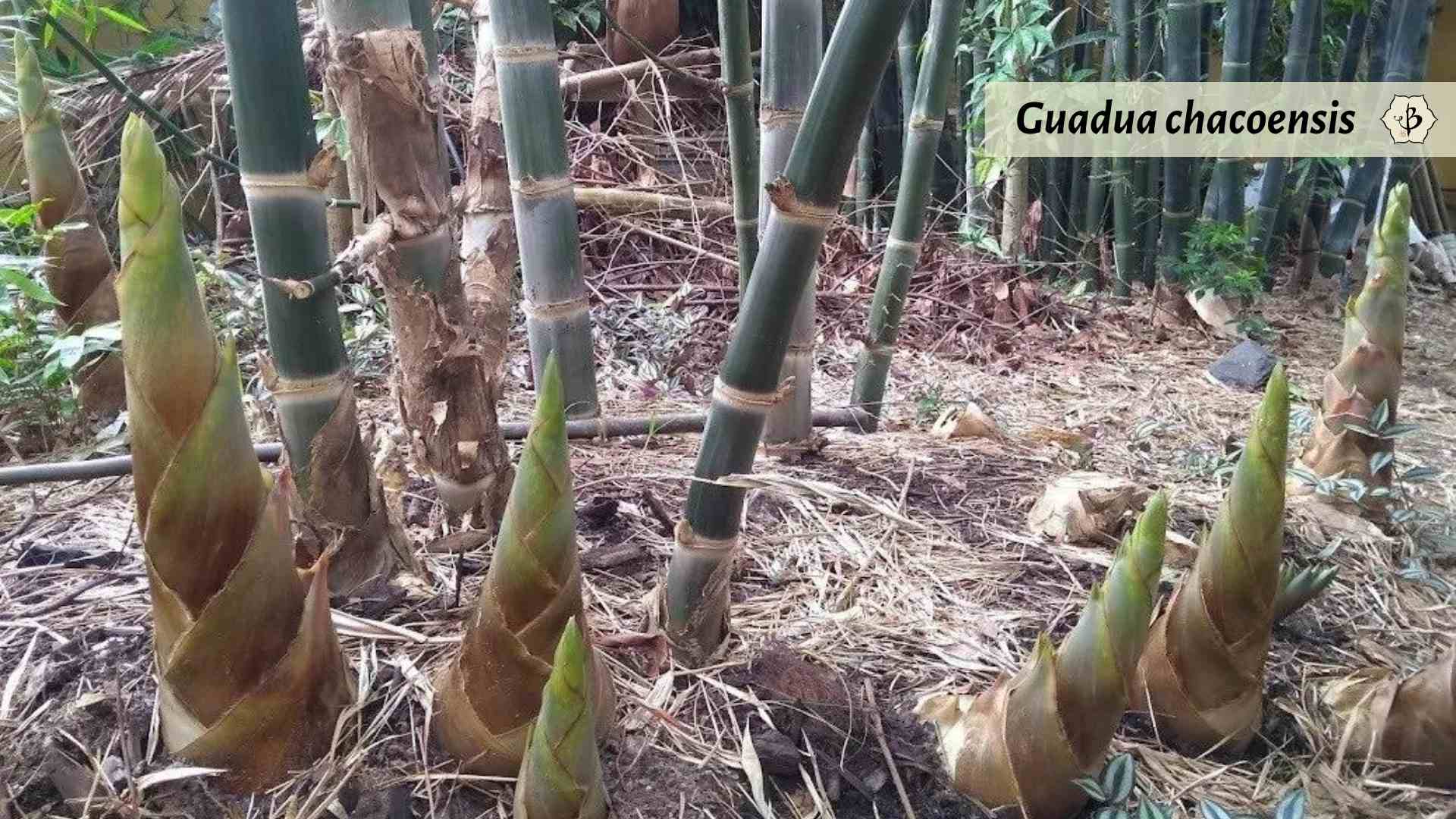
Herbaceous bamboo
The third tribe of bamboos consists of the odd, herbaceous varieties, Olyreae. These are small, compact shrubs, mostly growing in the Amazon rain forest, but also in parts of Africa. To most people, they don’t look like bamboo at all. They don’t have the long, woody culms that we usually look for. And they have not been adopted as garden ornamentals.
Claves and Subtribes
For the highly organized gardeners and botanists, there are even two more levels of taxonomy between the tribe and the genus. The clave is not widely used, except to denote New World, or neotropical bamboos, within the Bambuseae tribe. We like to distinguish them from the Old World tropicals, native to Asia and Africa.
Below the clave, we also have the subtribe, another rarely used distinction. Arundinariinae is the only subtribe of the temperate bamboos. Among tropical bamboos, there are several subtribes, such as Guaduinae, which comprises most of the Neotropical genera. But most authors and growers are happy to ignore or skip over this category when they describe their bamboo.
The following chart shows the many levels of organization for three distinct species of bamboo.
| Common name | Black bamboo | Giant Guadua | |
| Binomial name | Phyllostachys nigra | Guadua angustifolia | Cryptochloa strictiflora |
| Kingdom | Plant | Plant | Plant |
| Phylum | Angiosperms (flowering) | Angiosperms (flowering) | Angiosperms (flowering) |
| Class | Monocotyledons | Monocotyledons | Monocotyledons |
| Order | Poales | Poales | Poales |
| Family | Poaceae (grass) | Poaceae (grass) | Poaceae (grass) |
| Subfamily | Bambusoideae (bamboo) | Bambusoideae (bamboo) | Bambusoideae (bamboo) |
| Tribe | Arundinarieae (temperate, woody) | Bambuseae (tropical) | Olyreae (herbaceous) |
| Clave* | Neotropical (new world) | ||
| Subtribe* | Arundinariinae | Guaduinae | Olyrinae |
| Genus | Phyllostachys | Guadua | Cryptochloa |
| Species | nigra | angustifolia | strictiflora |
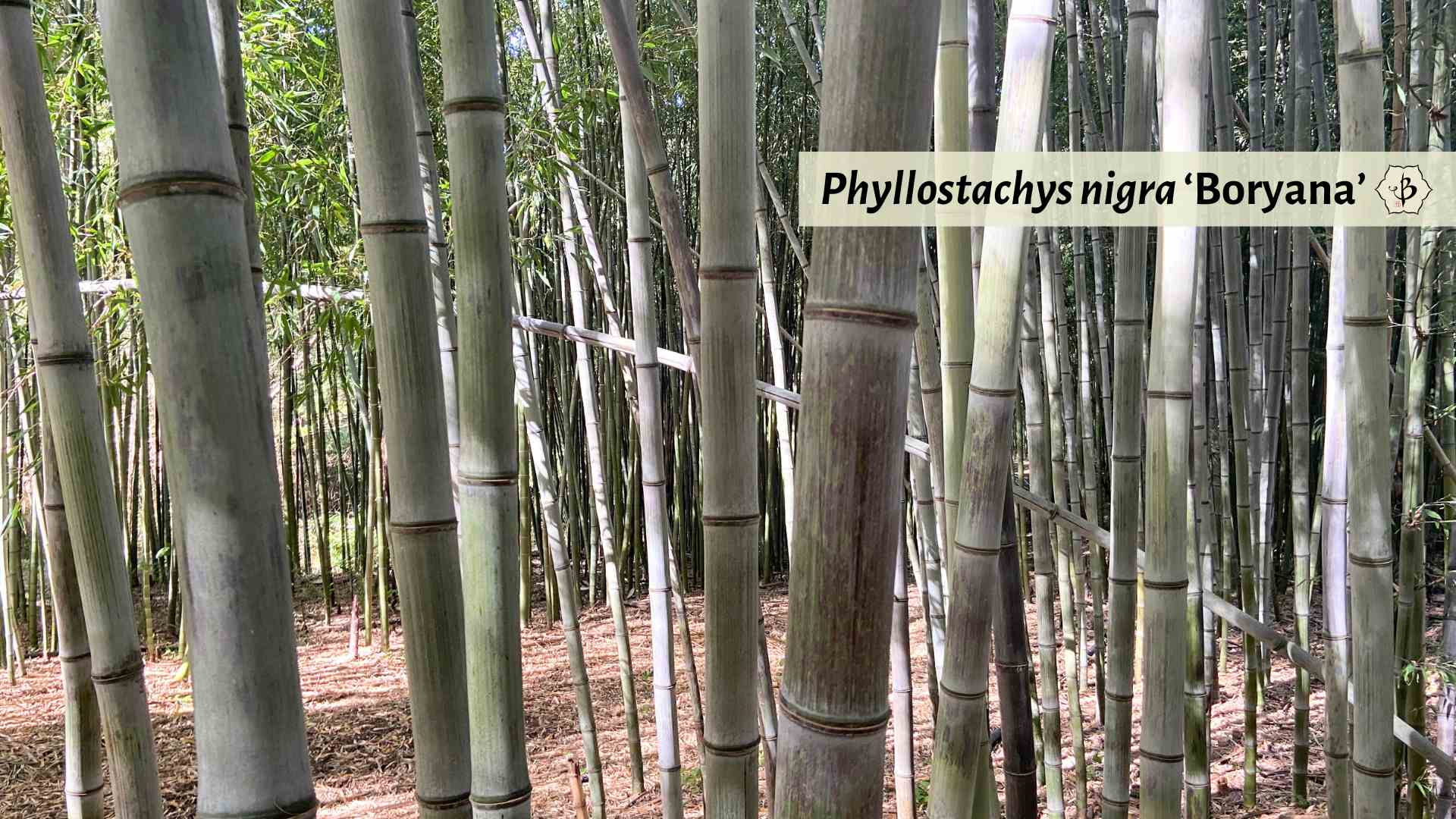
Keep learning
If you are fascinated by the classification of bamboo and its many tribes, genera and species, please consider sharing the article or subscribing to the blog. You might also enjoy some of the following posts.

























